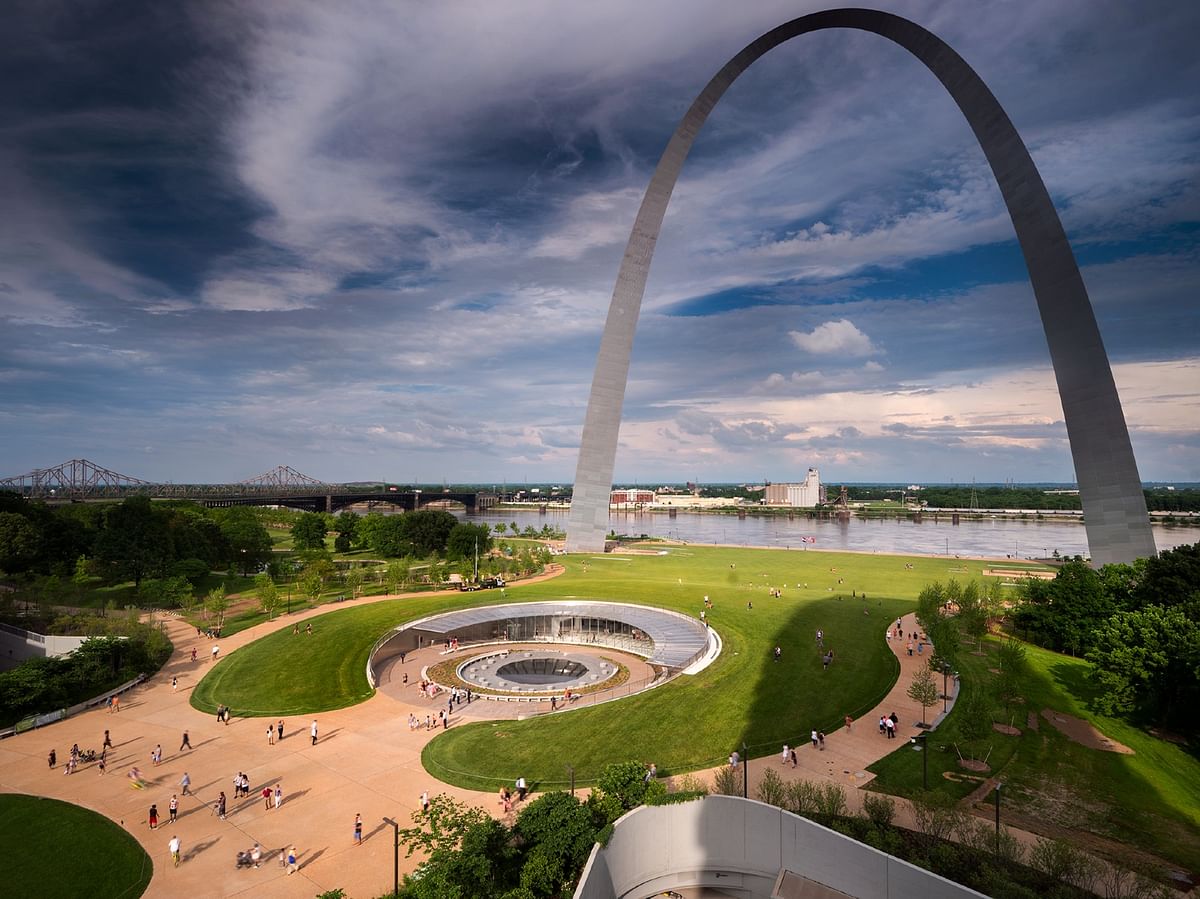
Ten projects win in 2019 Modernism in America Awards
By Justine Testado|
Tuesday, Apr 30, 2019
Related
Docomomo US has announced 10 winners in the 2019 Modernism in America Awards, which is the only national program that celebrates the people and projects working to sensitively and productively preserve, restore, and rehabilitate U.S. modern architectural heritage.
From architecture to preservation advocacy, the 2019 winners exemplify new approaches to “livable modernism, a once-in-a-lifetime effort to modernize one of the country’s most iconic landmarks, projects where vision and community coalesce, and the collaborative nature of art and design”. They'll be recognized at Design Within Reach's Third Avenue Studio in New York City on June 19.
Read more about the winners below.
DESIGN AWARDS OF EXCELLENCE
Des Moines Catholic Pastoral Center (Des Moines, IA)
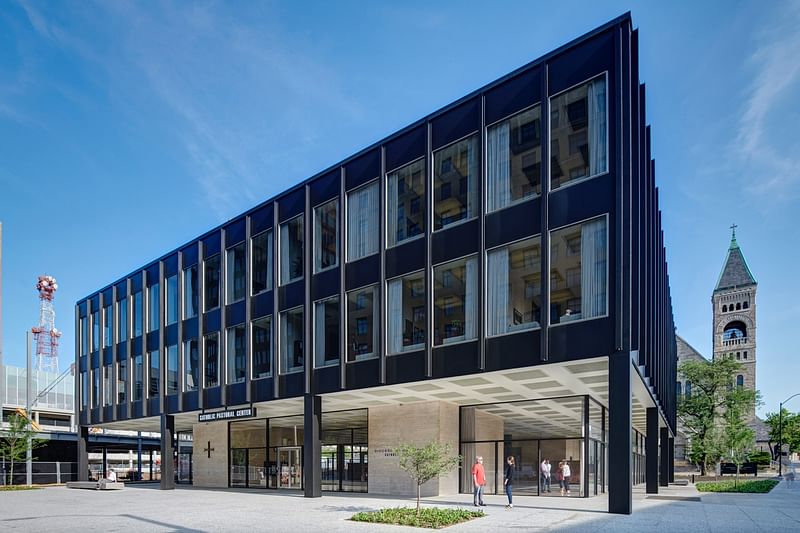
Location: Des Moines, IA
Original Architect: Ludwig Mies van der Rohe
Restoration Team: BBS Architects | Engineers, Harboe Architects, Genus Landscape Architecture, Neumann Brothers (Construction Manager), Jennifer I. James, MAHP (Architectural Historian)
Client: Catholic Diocese of Des Moines
Project excerpt:
“The Des Moines Catholic Pastoral Center was originally built as the Home Federal Savings & Loan bank building. In the late 1950s, bank president Jonathan Fletcher and director Joseph Chamberlain traveled throughout the U.S. looking at buildings and interviewing architects before ultimately selecting Ludwig Mies van der Rohe. Set back from the busy street corner, Mies’ design consists of an open, granite-paved plaza that flows seamlessly into the main level space, defined by plaster ceilings, travertine, steel and clear glass. The upper floors consist of black painted steel spandrels and tinted glass windows with exterior steel mullion elements to modulate the window bays. The building was threatened with demolition in the early 1990s, but architecture enthusiasts around the world helped bring attention to its plight and a group of ‘angel investors’ saved the building and deeded it to the Catholic Diocese of Des Moines. The owner’s primary goal was to provide a working environment for current and future needs for the next 50 years,’ which the design team managed to achieve while also respecting Mies’ original design.”
Jury comments
Jury member and Docomomo US President Theo Prudon noted the challenges of restoring a building that has been adapted for a different use and commended the team for ‘making the building shine again with minimal intervention.’
Jury chair Peyton Hall concurred, explaining that ‘Mies provides very little latitude for compatible change over time. This work preserves the material and visual character, exterior and interior, through careful material repairs and limited replacements.’”
Silvertop

Location: Los Angeles, CA
Original Architect: John Lautner
Design Team: Bestor Architecture (Rehabilitation Architect), Barbara Bestor (Principal in Charge), Stacey Thomas (Project Architect/Designer/Manager), Chris Kao, Elinor Nissley (Project Team)
Consultants: Ben Loescher, Loescher Meachem Architects (Owner’s Representative), Studio MLA (Landscape Architect), Byer Geotechnical, Inc., (Geotechnical Engineer), Omnispan Corporation (Structural Engineer, Consultant), Nous Engineering, Inc. (Structural Engineer of Record), Jamie Bush + Co. (Interior Design), Kaplan Gehring McCarroll Architectural Lighting (Lighting Designer), Michael Cronin Acoustic Construction (Acoustic Engineer - Recording Studio), Barbara Lemprecht (Historic Consultant), Newton Energy (Energy Consultant), VanDijk Associates, Inc. (Waterproofing), Geoff McFetridge/Champion Studio (Artist)
Contractor: NWGC Inc. (General Contractor), ARCCON (General Contractor Site Supervisor & Lautner Consultant)
Client: Luke Wood and Sophia Nardin
Project excerpt:
“Silvertop is John Lautner’s first concrete shell construction, nestled in the hills of Los Angeles. One of the most technically and structurally innovative houses in the world, Silvertop is a touchstone in the evolution of architectural design. The pre-stressed concrete roof spans 80 feet and mimics the hill the house rests on. Innovations that set this home ahead of its time include: a cantilevered driveway, an infinity edge pool, heating and cooling via an air-floor system of concealed mechanical and electrical systems, a custom-designed mechanical living room glass door, custom automated wood louvers, and folding shades for skylights. Bestor Architecture restored and partially renovated the house, updating much of the behind-the-scenes technological and mechanical elements to achieve a functioning 21st century home while preserving the architectural integrity of the site”.
Jury comment:
Jury member Jean-Louis Cohen further noted that “The brilliant restoration of the sculptural house Lautner built on a difficult and spectacular site has brought back to life the ingenious mechanisms imagined by the architect. Under the innovative pre-stressed concrete vault, the original finishes have been kept, the warm wood paneling allowing an astonishing engineering achievement to be at the same time a homely retreat - a mansion in the sky of Los Angeles.”
Preserving Eichler Neighborhoods

Location: Palo Alto, CA and Orange, CA
Project Team: Page & Turnbull (with Janus Consulting for Orange, CA)
Clients: City of Palo Alto, City of Orange
Project excerpt:
“After World War II, developer Joseph Eichler offered middle-class Californians a slice of the ‘American Dream’ with high-style, modernist, suburban homes at affordable prices. What Eichler offered was rare – tract homes designed by notable, talented architects like Anshen & Allen, Jones & Emmons, and Claude Oakland, and landscapes by Thomas Church, Kathryn Steadman, Robert Royston, and others. The two projects sought to address the question of how the ‘American Dream’ has aged in the context of these Eichler neighborhoods. Although the two cities faced different challenges, critical to both efforts was giving residents the opportunity to voice their opinions and to shape the approach to preservation. Page & Turnbull’s historians and designers hosted community-wide educational workshops in both cities to seek the residents’ views and priorities and test options for acceptable changes. They tailored additional efforts to each city, such as walking tours, advisory committees, and online surveys. The result was two documents offering a range of approaches, enabling the communities to manage change while preserving the essence of their neighborhoods.”
Jury comment:
The jury was impressed by the robust community engagement element and dynamism of the project. Jury chair Peyton Hall hailed it as a “broad, deep effort that adds up to a very significant educational, regulatory, and practical impact on livable modernism for real people in real neighborhoods.”
Gateway Arch Museum
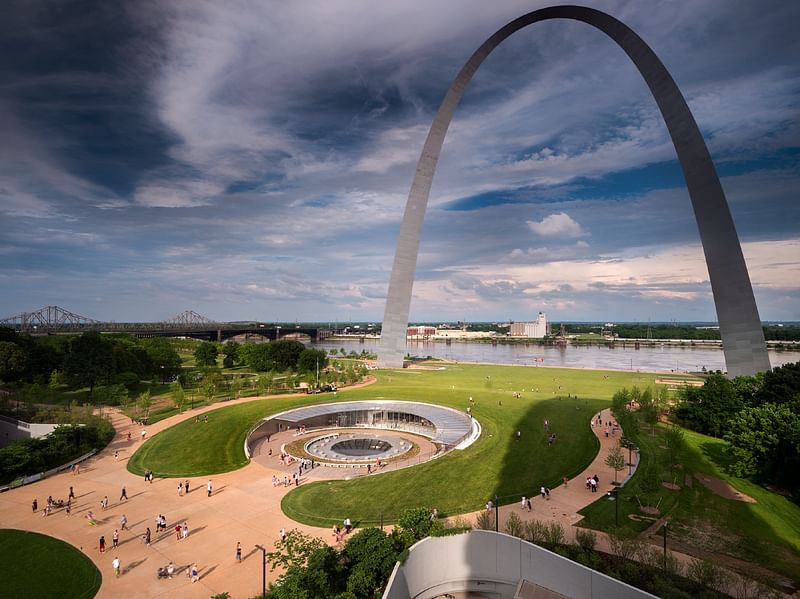
Location: St. Louis, MO
Original Team: Eero Saarinen (architect), Dan Kiley (landscape), J. Henderson Barr (design team), Lily Swan Saarinen (design team), Alexander Girard (design team)
Project Team: Cooper Robertson (Architecture), James Carpenter Design Associates (Architecture), Trivers (Architecture), Michael Van Valkenburgh Associates (Landscape Architecture), Haley Sharpe Design (Exhibit Design), Alper Audi Docomomo US – PO Box 230977 – New York, NY 10023 – [email protected] (Structural Engineer), Eckersley O'Callaghan (Structural Glazing/Façade), Cowell Engineering (Exhibit Structural Design), IMEG Corp. (Mechanical, Electrical, Technology Engineer), KAI Design & Build (Plumbing & Fire Protection Engineer), Tillotson Design Associates (Lighting Designer), Jaffe Holden (Audio Visual Consultant), Shen Milsom Wilke (Telecom, Electronic Security), Van Deusen & Associates (Vertical Transportation), Henshell & Buccellato (Waterproofing Consultant), Dennis G. Glore (Food Service Consultant), Hellmuth Bicknese (LEED Consultant), Acousticontrol (Acoustical Consultant), Cohen Hilberry Architects (Acccessibility & Universal Design Consultant), ABS Consulting (Physical Security Consultant), Randy Burkett Lighting Design (Site Lighting Designer), Landtech Design (Irrigation Designer), Hydro Dramatics (Fountain Designer), Olsson Associates (Soil Scientist), Ecological Landscape Management (Ecological Arborist), David Mason & Associates (Water Distribution & Roadway Civil / Structural Engineer), Civil Design, Inc. (Stormwater Civil Design), Geotechnology (Site & Building Geotechnical Engineer), Engineering Design Source, Inc. (Site Surveyor)
Client: Gateway Arch Park Foundation
Project excerpt: “Eero Saarinen’s iconic Gateway Arch is imbued with beauty, meaning, discipline, and technological achievement. Since it was completed in 1965, it has been one of the country’s most recognizable landmarks. This project addressed multiple complex needs, including: modernization of the underground museum, built concurrently with the Arch, reconnecting the site to the rest of the city, which had been cut off by an interstate highway, and the repair and prevention of surface discoloration around the base of the Arch.”
Jury comment:
Jury member Charles Birnbaum remarked that “from a landscape perspective, this is a case where the challenges were great, and the team succeeded in solving complicated, significant systems-based problems, addressing the ways the site was broken, and making it more functional.” In a project that embodies the “it takes a village” mentality, the jury lauded all those involved for making bold choices to ensure that this once-in-a-lifetime project was completed to exceptionally high standards.
DESIGN CITATIONS OF MERIT
Schlumberger Research Center Administration Building

Location: Ridgefield, CT
Original Team: Philip Johnson (architect), Florence Knoll (interior design), Richard Kelly (lighting designer), James Fanning (landscape)
Project team: Craig Bassam
Clients: BassamFellows, Inc
Project excerpt:
“Schlumberger Research Center Administration Building in Ridgefield, Connecticut is Philip Johnson’s first non-residential building completed in 1952. Annette Schlumberger and Henri Doll commissioned it after a visit to Johnson’s recently completed Glass House. The single-story rectangular steel-glass-and-brick building consists of perimeter offices organized around a central core that contains an open-air landscaped courtyard, glass enclosed conference room and library. As much a story about advocacy as it is about the restoration project, the building was vacant for many years before the local municipality stepped in, purchased the property, and formed a committee to evaluate the building’s future uses. As part of this process, they consulted with the Docomomo US/New York Tri-state chapter on its significance and future use. After a determined effort, BassamFellows Inc. negotiated a creative long-term lease solution, and in return they would fund the significant cost of the renovation. The building was in poor condition, but much of the original fabric was still present. The design team’s approach was to preserve the building’s original use as executive office space with slight adaptations to meet current building codes and provide needed services. The building now feels as contemporary today as it was groundbreaking at the time.”
Jury comment:
Jury member Amy Freitag explained that the jury “appreciated the public effort to control the destiny of the structure. It is a thoughtful and beautiful project.”
Pond House

Location: Wellfleet, MA
Original Architect: Olav Hammarstrom
Project team: SPG Architects – Caroline N. Sidnam, AIA, Partner (Lead), Eric A. Gartner, AIA, LEED AP+, Partner
Clients: Maxine Shaffer and Sharon Fey
Project excerpt:
“The jury awards a Design Citation of Merit for the restoration of the Pond House, in particular with respect to treatment of the surrounding landscape. The house was designed in 1960 by Olav Hammarstrom for prominent artist and writer Lilian Swann Saarinen. One of a number of classic, but modest, modern vacation/weekend homes designed in the mid-20th century for the Wellfleet landscape of kettle ponds and woods, the original design meshed modern forms with an earlier fishing cabin located on the property. Under new ownership for the first time since it was built, the design team was able to achieve desired updates without changing the distributions of the rooms and restore views of the pond without clearcutting. Jury member Alexandra Lange commended the final result for exhibiting “a very light hand,” and for “maintaining most of the vintage texture while upgrading almost everything.”
Jury comment:
Jury member Charles Birnbaum appreciated the “renewal of a landscape sympathetic to the era – and one that enhanced the architecture. The result is a spectacular combination that to paraphrase Tommy Church was more than just “parsley around the roast.”
Midcentury Modern Midland
Location: Midland, MI
Project team: Alden B. Dow Home & Studio, DC Tree, University of Michigan’s Department of Industrial Operation Engineering, Practicum in Production and Service System Class
Clients: Alden B. Dow Home & Studio
Project excerpt:
“Beginning in the early 1930s, Alden B. Dow, FAIA and Architect Laureate of Michigan, introduced modern architecture to Midland, Michigan. Dow challenged traditional ways of thinking, helped redefine how buildings are used and inspired other architects to do the same. Midcentury Modern Midland undertook an expansive project to identify, document, evaluate, and share this unique architectural heritage. The fruits of this labor, much of which was volunteer-based, has been made available to the public through a well-designed website and mobile app.
The jury considered this a model project that could and should be replicated elsewhere.”
ADVOCACY AWARD OF EXCELLENCE
Isami Enomoto Labor Murals Preservation
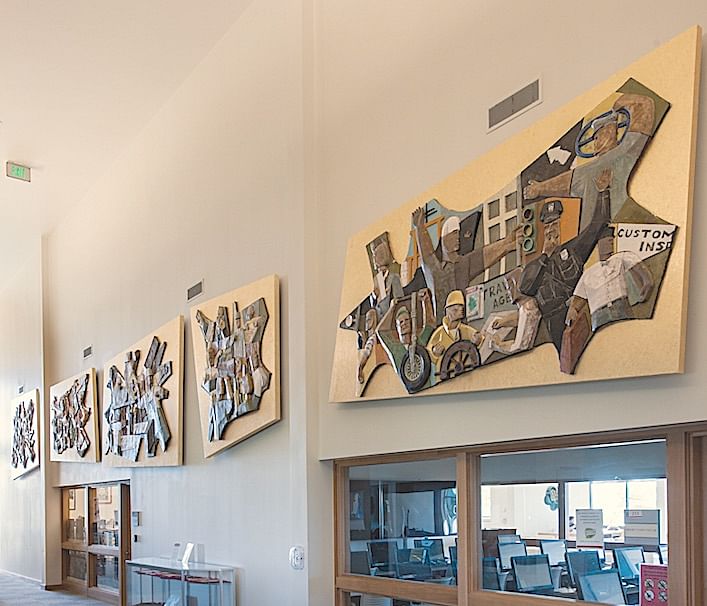
Location: University of Hawaii-West Oahu, Kapolei, HI
Advocates: Docomomo US/Hawaii, Dr. William J. Puette, UHWO Center for Labor Education and Research (CLEAR)
Excerpt: “When the Bank of Hawaii was planning to close its Kapahulu location in 2015, it reached out to Docomomo US/Hawaii to help find a home for five ceramic murals created by Hawaiian ceramist Isami Enomoto. Commissioned when the bank was built in 1960, the murals vividly capture an important moment in Hawaii’s history, depicting laborers and occupations in a style reminiscent of public art created under the Depression Era Public Works Administration. Docomomo US/Hawaii took quick action to temporarily store the murals and have them cleaned and conserved, while also spreading the word to try to find a permanent home. Dr. William J. Puette, the Director of CLEAR at the University of Hawaii West Oahu, which also houses an archive of labor history in Hawaii, had been following the story and thought CLEAR would be a perfect location. Over the next two years, Docomomo US/Hawaii and Dr. Puette raised almost $50,000 to move and install the new murals. In February 2018, a dedication ceremony was held at CLEAR and Docomomo US-Hawaii deeded the artworks to the Hawaii State Foundation on Culture and the Arts.
Todd Grover, Docomomo US Director, noted that ‘this project highlights the important linkages between art and design in the modern era. With so much focus on the exterior of a building, projects often overlook or do not consider the significance of the art and sculpture that is inside. The disappearance of these works diminishes the significance of the interior in addition to the overall understanding of the project and the artists that created them. They should not be left out of the preservation discussion.’”
Peter Meijer: Portland Building Advocacy

Location: Portland, OR
Advocate: Peter Meijer, AIA, NCARB
Excerpt: “Peter Meijer, AIA, NCARB, was awarded for his leadership and advocacy work related to the Portland Public Service Building. As the founding President of Docomomo US/Oregon, Peter and his architectural practice Peter Meijer Architect, PC (PMA) played a pivotal role in speaking up and advocating for the sensitive preservation of the Postmodern icon, designed by Michael Graves and completed in 1982. In 2011, PMA wrote the nomination to add the building to the National Register of Historic Places, a serious undertaking, without being contracted to do so. Shortly thereafter the city began to consider making improvements after years of deferred maintenance and chose to move forward with a reconstruction plan that disregarded the Secretary of the Interior’s Standards. Despite opposition from PMA, local and national advocates, and a letter from the National Park Service stating the building would be ’de-listed’ from the National Register, the Portland Landmarks Commission nevertheless voted to approve the reconstruction plan. Faced with significant alteration of arguably Portland’s most important architectural icon, Peter pushed forward individually and appealed the decision. Portland City Council denied the appeal, essentially ending the effort. Peter remained dedicated to the cause throughout the entire process, despite substantial local professional risk.
Although the fight is now over, Docomomo US/Oregon has not let the story go out of the headlines, continuing to document the ongoing dismantling of the Portland Building’s façade. Not all preservation advocacy efforts result in a positive outcome, but as Docomomo US Director Gunny Harboe explained, ‘these efforts would never happen in the first place without one person carrying the banner, holding the megaphone, taking the lead, and Peter has exhibited that strongly in this case, and throughout his career.’”
Terrace Plaza Hotel Advocacy Efforts
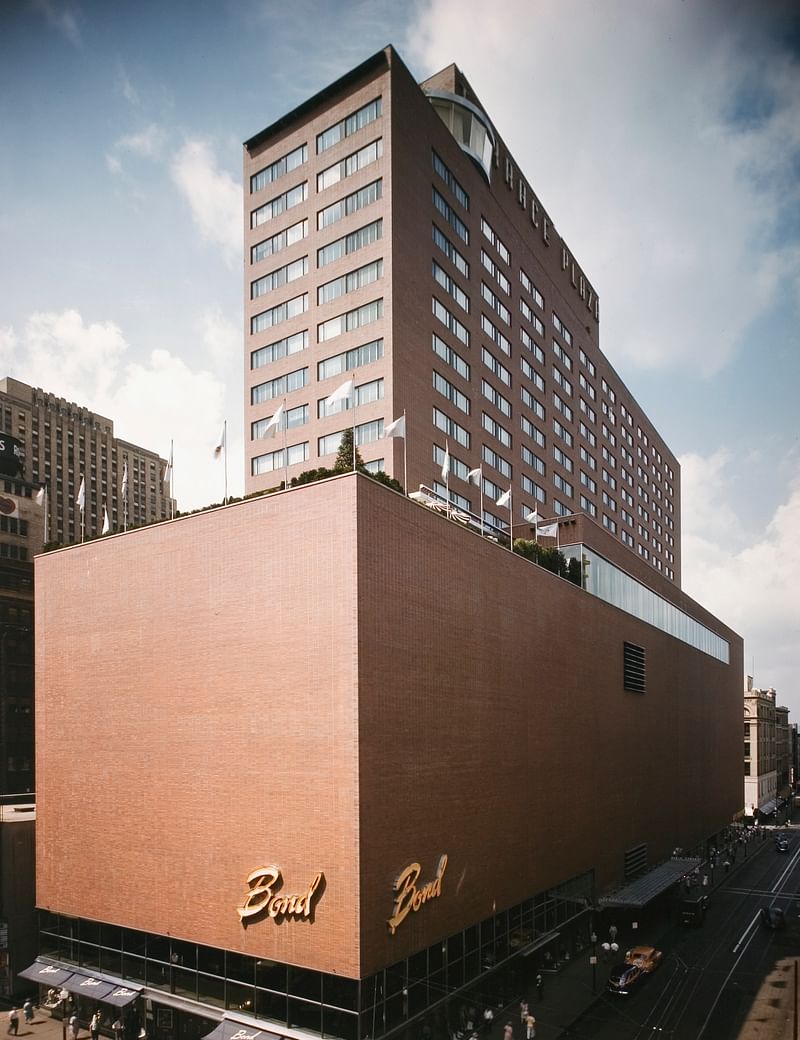
Location: Cincinnati, OH
Advocates: Cincinnati Preservation Association
Excerpt: “Designed by Natalie de Blois of Skidmore, Owings & Merrill (SOM), the Terrace Plaza Hotel opened in 1948 as the country’s first International-style hotel. In addition to the hotel, the building included retail space and a high-end restaurant with a mural by artist Joan Miró. The business began to struggle in the late 1970s but managed to hang on until it closed for good in 2008. It has sat vacant since then, changing owners and experiencing demolition by neglect. The Cincinnati Preservation Association led the effort to preserve the building through educational efforts, statewide and local designation, and creative means to find a sympathetic developer. Terrace Plaza is not ‘out of the woods’ yet, but thanks to the work of the Cincinnati Preservation Association, other local advocates, and the support of councilmembers such as David Mann, the tide is turning in the right direction.
Liz Waytkus, Docomomo US Executive Director, praised the coalition for ‘being extremely proactive, reaching out to a broad community of stakeholders and elected officials to awaken their city to Terrace Plaza's high level of significance.’
Docomomo US Director Robert Nauman added that ‘at the time, SOM was cutting edge for employing female architects in their firm, but for so many years only the male figures were recognized. It’s nice to see women architects and designers such as Natalie de Blois coming out of the shadows and getting the recognition they deserve.”’

RELATED NEWS Thirteen projects win in 2018 Modernism in America Awards

RELATED NEWS Nine historic midcentury buildings recognized in 2017 Modernism in America Awards


Share
2 Comments
timmoran1 · May 02, 19 4:56 PM
Let'ss let's see now about this list (1-10): Gross, gross, gross, stupid, stupid, lame, lame, why did this happen, WHY, extremely boring.
Can someone bury modernism already? Can someone bury all of its idiot, party and society ruining devotees? It's a sad and stupid form of oppressive architecture only liked by white wine-swilling dilettantes at garbage Montauk parties and they're sad kid brother who spent quadruple on architecture school versus whatever he'll make on life-long from work on the form (but what if the tub room, wait for it, had a glass window?). Kill it all with a heavy sweep of fire!
You know when we were great at building buildings? Every year before 1930, dating back several thousand years. Architects need to be reassigned to The Killing Fields. Block-breaking, souless Modernism did more to destroy the American city then anything other then a really fun riot.
Modernism should be celebrated the same way that we celebrate the Exxon Valdez -- a tragedy that ruined a beautiful place. Except of course modernism ruined many beautiful places and not just one.
friend · May 02, 19 7:20 PM
now this really sounds like the beginning of a nuanced conversation...
Comment as :